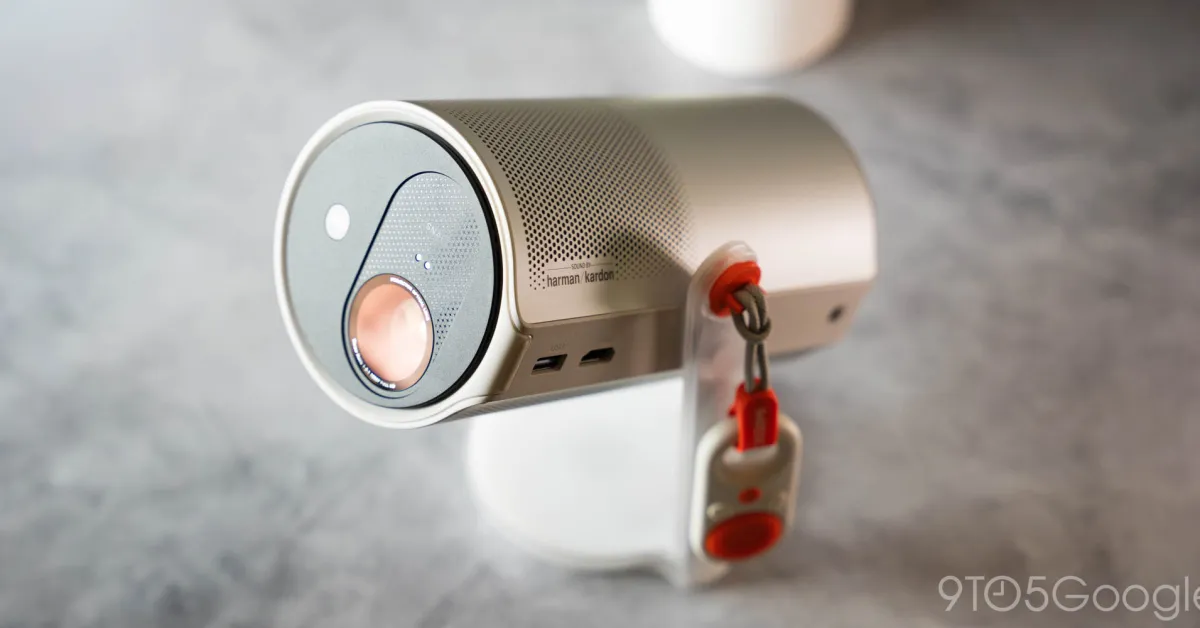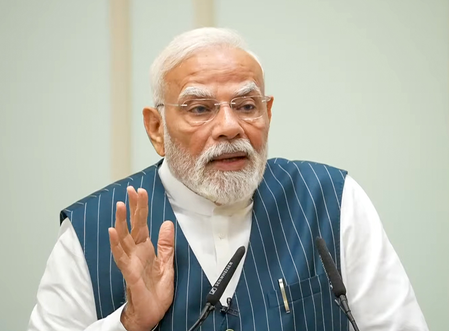
Not every use case for a projector consists of an unchanging environment and constant access to power. Xgimi’s battery-powered Mogo 4 thrives on change, and it packs almost enough power to keep up.
Xgimi has built up a strong reputation over the course of several years, leading with some solid in-home projectors that come in at reasonable price points. The Mogo 4 aims to build on that. Really, it’s trying to build on the Mogo 3, which was a similarly portable projector with limiting flaws.
The design is one of the best parts about the Mogo 4. It’s unassuming but turns into something that gets a reaction out of others when they see it for the first time. The new edition looks like a Bluetooth speaker at first glance.
Pulling up on it reveals the projector lens, which now rotates 360 degrees, rather than just short of that in the previous generation model. This essentially allows the Mogo 4 to be placed anywhere. It can point up at ceilings and from weird angles all becuase of Xgimi’s software and hardware design.
Advertisement – scroll for more content
Like most of the company’s projectors, Xgimi’s Mogo 4 has auto keystone correction and automatic focusing. Point it at a wall from a 60-degree angle, and it will do a pretty good job of squaring the image up. Move it closer, and the automatic focus adjustment will clear the image up in a couple of seconds.
I found myself going in and adjusting the keystone correction a couple of times manually. Xgimi does a good job of programming its projectors to calculate angles and set up an even image, but it’s not perfect. Still, if you’re moving the projector around as much as is allowed with the Mogo 4, it might not matter to you. Even if it does, keystone correction takes little time to set manually.
That can be done by the included remote, which is one of two that come with the Mogo 4. There’s one traditional Google TV remote that allows for more advanced navigation, and there’s a more mobile-friendly basic remote that only offers a small set of buttons. It uses the IR sensor built into the Mogo 4, unlike the Bluetooth remote, which can work from any angle.
Both included remotes are built well, and the smaller basic one is adorable. Something about it makes me want to use it all the time, even though I’m a little limited. It even has a hook to keep it connected to the projector as it gets jostled around.
The projector itself is, as mentioned, built for going with you. It isn’t as compact as a laptop or handheld device, but it’s impressive Xgimi is able to get the form factor it did. Once closed up, it can be stowed or carried around.
Xgimi says that the Mogo 4 can act as a Bluetooth speaker in its compact mode, but Bluetooth pairing did not work for me. I tried for an hour before giving up. For what it’s worth, I’ve not seen anyone else with this issue. It just might be my unit. Ideally, a connected phone could play music while the Mogo 4 is closed up, with a little light show to boot.
Related: Xgimi launches Horizon 20 series at IFA powered by Google TV
This plays into the vibe that the projector is going for, alongside the included sunset animation filter and other available add-ons. The filter snaps on and triggers the Moog 4’s dreamscape mode, which acts as a mood-setter in dim rooms. The sunsent filter is a cool addition, and it’s easy to attach whenever the mood strikes.
The image itself is where the Mogo 4 shows what it’s capable of. It’s nothing compared to larger projectors with 4-digit lumen counts, but it’s a decent image for how compact it is. It shoots at 1080p with a max brightness of 450 ISO lumens. With that, you can get a fairly decent image during daytime, but a dim room is preferable for most viewing.
In fact, to use the Xgimi Mogo 4 for the longest it can last on battery power alone, the brightness needs to be in “Eco” mode. That’s around a 3 out of 10, and that averages out to around 2.5 hours. At its brightest, it won’t last more than an hour at max.
The Mogo 4 can be plugged in, though. When it is, there’s no restriction on brightness. In most scenarios, I found myself keeping the Mogo 4 plugged in. Unless I was relocating to another part of the house, the Mogo 4 was connected to power.
If you’re really looking for 5 hours of eco mode projection, Xgimi sells a battery stand separately, which essentially doubles the battery life.
Whether powered or not, I was shocked at how loud the Mogo 4 could get. It really is a part-time speaker, becuase keeping it at around a level 20 felt like too much. It isn’t the most amazing audio, even with Harman Kardon branding attached, but it does a good job of matching the visuals for a pleasant experience.
That entire experience is powered by Google TV, which has been on Xgimi’s devices for a long time. This model has Netflix pre-loaded, which isn’t always the case due to licensing. With that, the entirety of the Google TV Play Store is available.
Even outside of that, the Mogo 4 carries an HDMI port for external inputs. Game mode allows for 60Hz visuals at 1080p. That’s enough for a pleasant portable or easy-going experience, but it might not be the most adequate for competitive titles on your console. Still, getting up to 120 inches of game might be worth the tradeoff.
Overall, I’ve really enjoyed using the Mogo 4. It isn’t pretending to be anything absolutely groundbreaking, but it does the basics right. It allows for a large image anywhere, with adequate brightness. As long as you don’t plan on doing marathon movie nights while camping away from power, the Mogo 4 is a good option.
The Mogo 4 comes in at $499, which is a great price point for projectors in general, and even better for one that offers the convenience of Xgimi’s option. If you’re looking for a brighter option with a laser light engine, the Xgimi Mogo 4 Laser comes in at $799.



